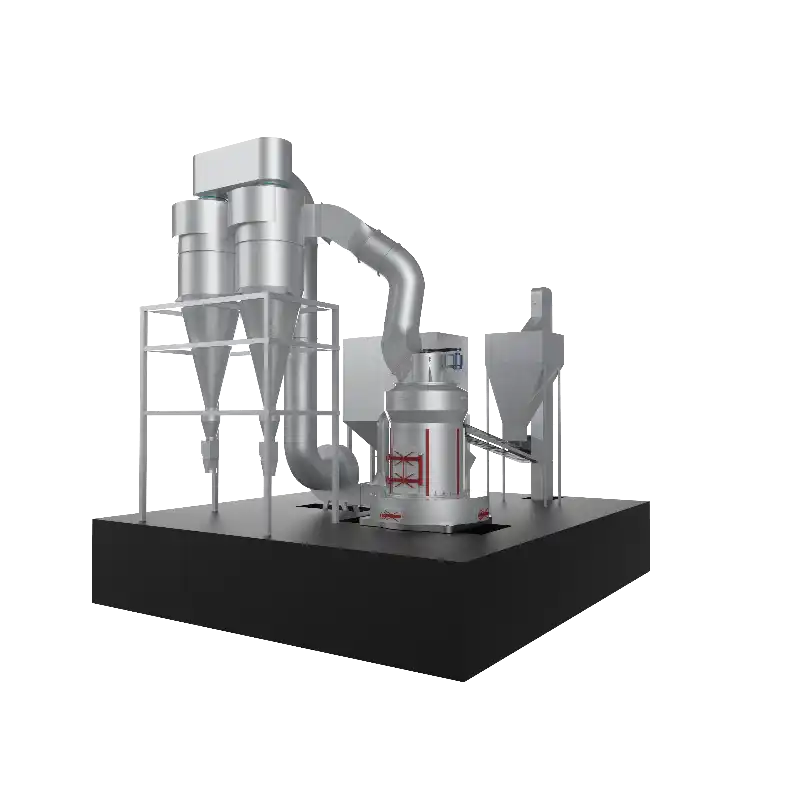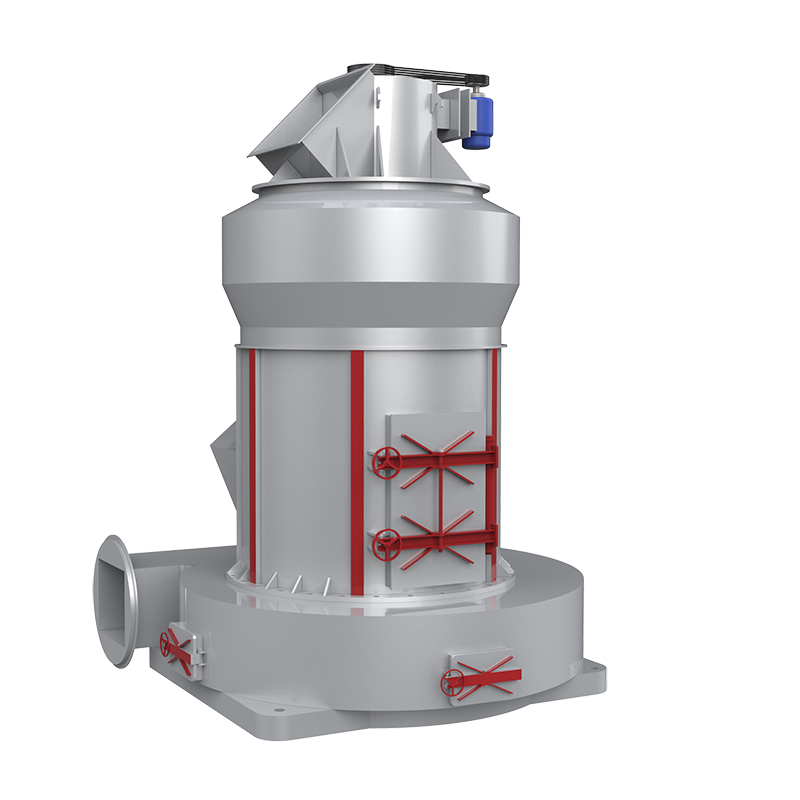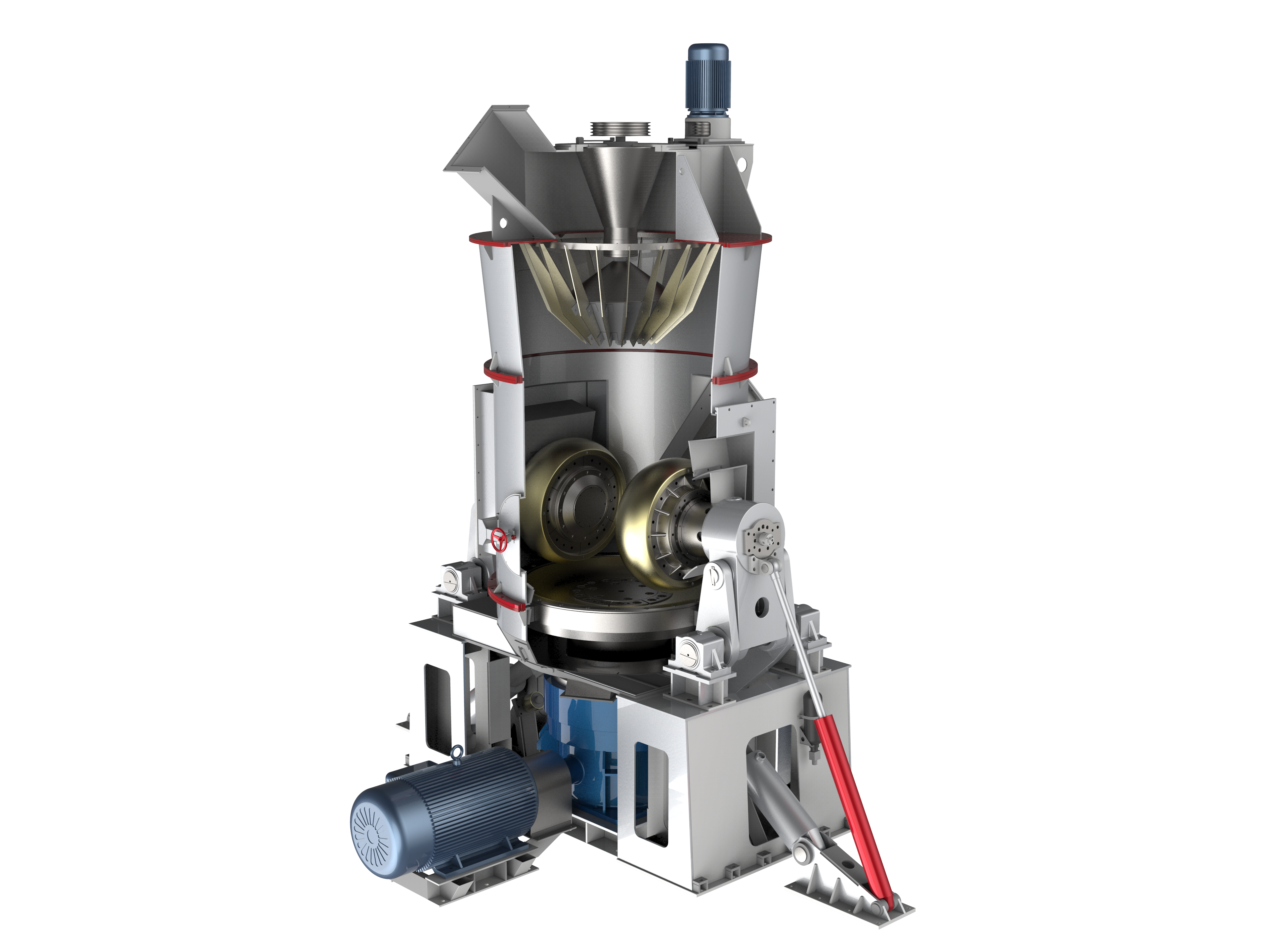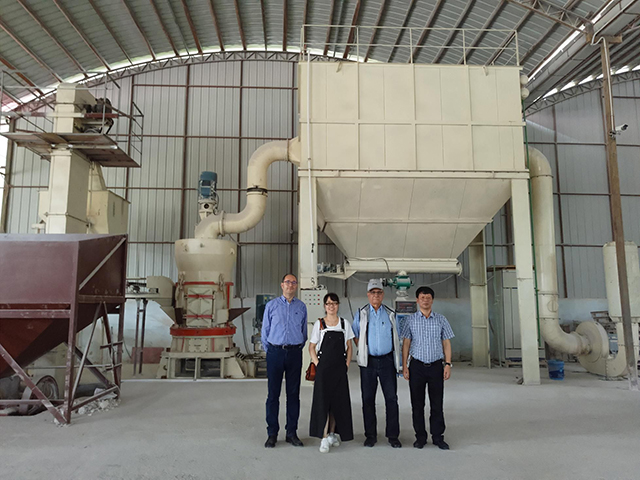Contents Catalog
Introduction of lime slaking process
Lime slaking process is a crucial chemical process with wide-ranging applications in various industries, including construction, wastewater treatment, pulp and paper production, and metallurgy. The process involves the reaction of quicklime (calcium oxide, CaO) with water (H₂O) to produce slaked lime (calcium hydroxide, Ca(OH)₂). This reaction is highly exothermic, releasing a significant amount of heat. Understanding the lime-slaking process and the different types of lime-slaking equipment is essential for optimizing production efficiency, ensuring product quality, and minimizing environmental impacts.
The Lime Slaking Process
2.1 Chemical Reaction in Lime Slaking Process
The chemical equation for the lime slaking process is as follows:
CaO + H₂O\rightarrow Ca(OH)₂ + 65.2 kJ/mol
Quicklime is a white, caustic, alkaline solid. When it comes into contact with water, an intense reaction occurs. The water molecules break the ionic bonds in calcium oxide, and new chemical bonds are formed to create calcium hydroxide. The heat released during this reaction can cause the temperature of the reaction mixture to rise significantly, sometimes even to the boiling point of water.
2.2 Lime Slaking Process Stages
Initial Wetting: In the first stage, water is added to the quicklime. The water rapidly penetrates the pores of the quicklime particles, initiating the chemical reaction at the surface of the particles.
Reaction Propagation: As the reaction proceeds, the calcium hydroxide formed on the surface of the particles gradually diffuses into the surrounding liquid. The reaction then moves deeper into the quicklime particles, consuming more calcium oxide.
Completion and Product Formation: Once all the available calcium oxide has reacted with water, the slaked lime is formed as a fine, white, and highly alkaline powder or a slurry, depending on the amount of water used during the slaking process.
2.3 Factors Affecting the Lime Slaking Process
Particle Size of Quicklime: Smaller-sized quicklime particles have a larger surface area available for reaction. This leads to a faster slaking rate as the reaction occurs at the surface of the particles. Larger particles, on the other hand, may take longer to slake completely, and there is also a risk of incomplete slaking.
Water-to-Lime Ratio: The amount of water added to the quicklime is critical. An optimal water-to-lime ratio is required to ensure a complete reaction and the formation of a stable slaked lime product. If too little water is added, the reaction may not go to completion, and unreacted quicklime may remain. If too much water is added, the resulting slaked lime slurry may be too dilute, which can be a problem for some applications.
Temperature: The exothermic nature of the lime slaking reaction means that the temperature of the reaction mixture can affect the reaction rate. Higher initial temperatures can accelerate the reaction, but if the temperature rises too high, it can cause problems such as the evaporation of water and the formation of a hard, crusty layer on the surface of the reaction mass.
Mixing Intensity: Adequate mixing is essential to ensure uniform distribution of water and quicklime, promote mass transfer, and prevent the formation of lumps. Good mixing can also help in dissipating the heat generated during the reaction, maintaining a more stable reaction environment.
Types of Different Lime Slakers and Their Advantages and Disadvantages
3.1 Continuous Lime Slakers
Advantages of different lime slaker
- High-Volume Production: Continuous lime slakers are designed to handle large-scale production requirements. They can operate continuously for long periods, making them suitable for industries with high-volume lime slaking needs, such as large-scale construction material manufacturing plants.
- Steady Product Quality: Since the process is continuous, the conditions within the slaker can be more easily controlled. This results in a more consistent quality of the slaked lime product in terms of particle size distribution, reactivity, and chemical composition.
- Automation Potential: These slakers are highly amenable to automation. Sensors can be used to monitor and adjust parameters such as water flow, lime feed rate, and temperature, reducing the need for manual intervention and improving overall process efficiency.
Disadvantages - High Initial Investment: The equipment for continuous lime slakers is relatively complex and often requires a significant capital investment. This includes the cost of the slaking unit, associated conveyors, control systems, and safety equipment.
- Maintenance Intensity: Continuous operation means that the equipment is subject to wear and tear over time. Regular maintenance is required to keep the slaker in optimal working condition. This includes replacing worn-out parts such as impellers, seals, and bearings, which can be costly and time-consuming.
- Limited Flexibility: Continuous slakers are typically designed for a specific production capacity. It can be difficult to adjust the production rate significantly without major modifications to the equipment, making them less suitable for applications with highly variable production demands.
3.2 Batch Lime Slakers
Advantages of batch lime slakers
- Flexibility: Batch lime slakers are highly flexible in terms of production volume. They can be used for small-scale production runs or for testing new lime sources or production processes. This makes them ideal for research and development purposes or for industries with irregular lime-slaking requirements.
- Low Initial Cost: The equipment for batch lime slakers is generally simpler and less expensive compared to continuous slakers. This makes it more accessible to small – and medium-sized enterprises that may not have the financial resources for a large-scale continuous system.
- Ease of Operation: Batch slaking processes are often easier to understand and operate. They require less complex control systems, and operators can more easily monitor and adjust the process parameters for each batch.
Disadvantages - Inconsistent Product Quality: Since each batch is a separate operation, there can be more variation in the quality of the slaked lime product between batches. Differences in the initial conditions, such as the quality of the quicklime, the water-to-lime ratio, and the mixing intensity, can lead to inconsistent product properties.
- Lower Production Efficiency: Batch lime slakers have a lower production capacity compared to continuous slakers. The time required to load, process, and unload each batch limits the overall output, making them less suitable for high-volume production requirements.
- Higher Labor Requirements: Batch processes often require more manual labor for tasks such as loading the quicklime, adding water, monitoring the reaction, and unloading the slaked lime. This increases the labor cost and also the potential for human error.
3.3 Jet – Type Lime Slakers
Advantages
- Fast Reaction Rate: Jet-type lime slakers use a high-velocity jet of water to inject into the quicklime. This high-speed mixing promotes rapid contact between water and quicklime, resulting in a very fast reaction rate. The slaking process can be completed in a relatively short time, which is beneficial for applications where quick production is required.
- Compact Design: These slakers have a relatively compact structure, taking up less floor space compared to some other types of slakers. This is an advantage in facilities where space is limited.
- Good Heat Dissipation: The high-velocity water jet helps in dissipating the heat generated during the exothermic reaction effectively. This can prevent overheating of the reaction mixture and ensure a more stable and efficient slaking process.
Disadvantages - High Energy Consumption: The operation of jet-type lime slakers requires a high-pressure water supply, which consumes a significant amount of energy. This can increase the operational cost of the slaking process, especially for large-scale production.
- Particle Agglomeration: The high-speed mixing in jet-type slakers can sometimes cause the formation of agglomerates in the slaked lime product. These agglomerates may need to be further processed or separated to meet the quality requirements of some applications.
- Limited Capacity: Jet-type slakers may have a relatively limited production capacity compared to some larger-scale continuous slakers. They may not be suitable for industries with extremely high – volume lime – slaking demands.
3.4 Stirred – Tank Lime Slakers

Advantages
- Good Mixing and Mass Transfer: Stirred-tank lime slakers use mechanical agitators to mix the quicklime and water. This provides excellent mixing and mass transfer, ensuring that the reaction occurs uniformly throughout the reaction mixture. This results in a more complete and homogeneous slaking process.
- Versatility: They can handle a wide range of water-to-lime ratios and different types of quicklime. This makes them suitable for various applications with different product requirements.
- Easy to Modify: The design of stirred-tank slakers is relatively simple, and it is easy to make modifications to the equipment, such as changing the agitator type or adding baffles, to optimize the slaking process for specific needs.
Disadvantages - High Shear Stress: The mechanical agitation can generate high shear stress in the reaction mixture. This may cause damage to the slaked lime particles, especially if the agitation speed is too high. Damaged particles may have different properties and may not be suitable for some applications.
- Energy – Intensive Agitation: Running the mechanical agitators requires a significant amount of energy, contributing to the overall operational cost of the slaking process.
- Risk of Fouling: The internal components of the stirred – tanks, such as the agitator and the tank walls, can be prone to fouling by the slaked lime. Regular cleaning is required to maintain the efficiency of the slacker and prevent clogging.
Applications of Slaked Lime Produced from Lime Slaking
Construction Industry: Slaked lime is used in the production of mortar, plaster, and lime-stabilized soils. In mortar, it reacts with carbon dioxide in the air over time to form calcium carbonate, which hardens and binds the sand and other aggregates together. In lime-stabilized soils, it improves the engineering properties of the soil, such as increasing its strength and reducing its plasticity.
Wastewater Treatment: Slaked lime is used to adjust the pH of acidic wastewater. It can also be used to precipitate heavy metals from wastewater in the form of metal hydroxides. For example, in the treatment of wastewater containing copper ions, adding slaked lime can cause the formation of copper hydroxide precipitate, which can then be removed by sedimentation or filtration.
Pulp and Paper Industry: In the pulping process, slaked lime is used in the chemical recovery cycle. It helps in the regeneration of cooking chemicals, such as sodium hydroxide, which are used to break down the lignin in wood chips and separate the cellulose fibers.
Metallurgy: In some metallurgical processes, such as the extraction of aluminum from bauxite, slaked lime is used to remove impurities. It reacts with silica and other impurities in the bauxite ore to form insoluble compounds that can be separated from the aluminum-containing solution.
Environmental Considerations
Air Emissions: During the lime slaking process, especially in some older or poorly – ventilated systems, there may be emissions of dust particles, including unreacted quicklime and slaked lime. These dust particles can be a health hazard if inhaled by workers. Proper dust-collection systems, such as bag filters or cyclones, should be installed to minimize air emissions.
Waste Generation: In some cases, there may be a small amount of unreacted quicklime or by-products formed during the slaking process. These need to be properly managed to prevent environmental pollution. For example, unreacted quicklime should be recycled or disposed of in accordance with environmental regulations.
Energy Consumption: As mentioned earlier, some types of lime slakers, such as jet-type and stirred-tank slakers, can be energy-intensive. Using energy-efficient equipment and optimizing the process to reduce energy consumption can help minimize the environmental footprint of the lime-slaking process.
Conclusion of lime slaking process and lime slaker
The lime-slaking process is a fundamental chemical process with diverse applications in multiple industries. Understanding the process, including the chemical reaction, factors affecting it, and the different types of lime slakers available, is crucial for industrial operations. Each type of lime slaker has its own set of advantages and disadvantages, and the choice of the slaker depends on factors such as production volume, product quality requirements, available capital, and operational flexibility. As industries continue to evolve, there is a need for further research and development to improve the efficiency of the lime-slaking process, reduce its environmental impact, and develop more advanced and cost-effective lime-slaking equipment. This will ensure the continued availability of high-quality slaked lime for a wide range of industrial applications while minimizing the associated costs and environmental risks.




